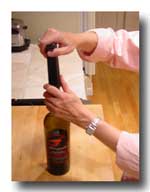-
Scriptwriting for video
普通类 -
- 支持
- 批判
- 提问
- 解释
- 补充
- 删除
-
-
Introduction
SIMPLICITY IS THE ULTIMATE SOPHISTICATION, so said Leonardo da Vinci. Da Vinci probably wasn't thinking of video as a great way to teach complex, or sophisticated, processes and concepts, nor was he likely referring to the challenge that Educational technologists have in being able to tell a story visually with narration that compliments, not muddles or distracts from, the story. Scriptwriting for video is really about correlating the narration with the video to assist in making the story seem simple.
-
Writing for video vs. print
Most likely you've chosen video as your media for teaching a concept or process that is more effective animated than in print. Because of the linear nature of video, writing for video is different from writing for print. Here are a few comparisons.
.jpg)
-
Video needs narration
Learners experience deeper learning when narration correlates to animation rather than repeat exactly what is shown. When learners are shown animation without narration they experience the same results as when the narration does not correlate to the animation. (Mayer & Anderson, 1991)
Learners also experience deeper learning when (Mayer, 2003):
•Extraneous information is excluded rather than included. For example, if the video shows how to fix a tire, avoid tidbits about the wear and tear of tires. Narration that does not correlate to the video becomes distracting because learners split their attention between the two.
•Information is presented in a conversational style rather than a more formal style.
•Narration is presented with the animation rather than before or after it.-
Tips for correlating narration with video

Closing a bottle of wine: Click for an example of when narration doesn't correlate with the visuals
•Avoid stating the obvious. For example, if the video clearly shows how something works, avoid stating it. Instead, use words that relate to and compliment the visuals. State what isn't obvious.
•Use narration to tell leaners what it's about (if it isn't obvious) and why it's important or why they should care about it. You can also think of this as "What is it? So what?"•Think visuals first, narration second. Watch each scene without the sound. Ask yourself, "What needs to be said about the scene that will enhance it? What must be said so that learners won't miss the point? What questions will be raised that need to be answered?"
.jpg)
Closing a bottle of wine: Click for an example of when narration does correlate with the visuals and includes key details
•Say what you need to say and then stop. Watch each scene and focus primarily on narration. Listen for and delete any extraneous words or phrases.
•Avoid using narration that doesn't add to the visuals. As you watch the video, think about what you'd expect or want to hear. The goal is to make the narration and video appear seamless to the learner.•Use narration for emphasis. How you say something can be more important that what you say.
More information
Scriptwriting Guidelines-
Author
Susan Greenberg, Educational Technology student
Greenberg, S. (2005). Scripting for video. In B. Hoffman (Ed.), Encyclopedia of Educational Technology. -
-
- 标签:
- correlate
- learners
- narration
- scriptwriting
- video
- example
-
加入的知识群:



学习元评论 (0条)
聪明如你,不妨在这 发表你的看法与心得 ~